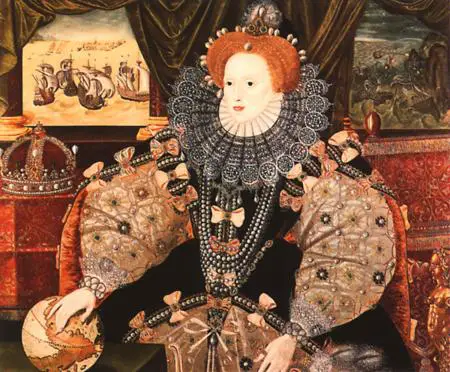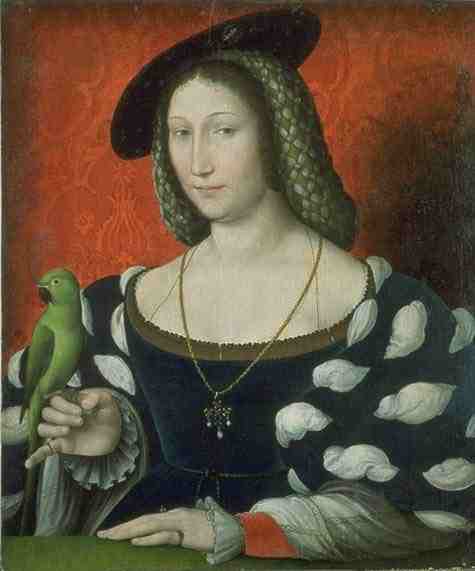 Author Adrienne Dillard, who has done extensive research on Lettice's family, the Careys and Knollys, has written this excellent bio of Lettice. Thank you so much to Adrienne.
Author Adrienne Dillard, who has done extensive research on Lettice's family, the Careys and Knollys, has written this excellent bio of Lettice. Thank you so much to Adrienne.
Per Francis Knollys' Latin Dictionary entry,* Lettice Knollys was born in 1543 on the Tuesday present after All Hallows' Day, or November 8, 1543, most likely at the Knollys' family home at Rotherfield Greys in Oxfordshire. Lettice's brilliant red hair and pale complexion may have come from her close connections to the royal family. Her mother, Catherine Carey, was Anne Boleyn's niece and Elizabeth I's cousin. Some historians have debated whether Catherine was the product of Mary Boleyn's affair with King Henry VIII, but it has never been proven and rests only on circumstantial evidence. Lettice was the third child and second daughter born out of a possible sixteen, but more likely fourteen, children born to Catherine and Francis.
Lettice probably spent most of her childhood like other gentry children of the Tudor period. While her mother and father served the monarch, she would have been at home with nannies and tutors. However, Lettice may have been able to spend a significant amount of time with her mother, as she would have been at home often, birthing Lettice's numerous siblings. At some point after Mary I came to the throne, the Knollys family fled England in exile to the more Protestant-friendly Low Countries. In 1557, Catherine and five of her children were noted to be in Frankfurt, Germany, in the home of London merchant John Weller. It is unknown if Lettice was one of the five children mentioned. It is possible that Lettice was placed in the service of the then Princess Elizabeth at Hatfield during that time.
Elizabeth's accession to the throne came with great rewards for the Knollys family. Francis was appointed Vice Chamberlain of the Royal Household and Catherine was appointed to a senior position in the Privy Chamber. She would eventually be promoted to First Lady of the Bedchamber. Lettice joined her parents in court service as a Maid of Honour. At some point after 1560, Lettice married Viscount Hereford (later Earl of Essex), Walter Devereux. Lettice served at court until she returned to the Devereux family home at Chartley in Staffordshire to give birth to two daughters, Penelope in 1563 and Dorothy in 1564.
Lettice returned to court during the summer of 1565, when the Spanish ambassador, de Silva, called her "one of the best looking ladies of the court." Though she was pregnant with her third child at the time, the court was overrun with gossip about her inappropriate relationship with the queen's favourite, Robert Dudley. Lettice drew the royal ire with her flirtation so she returned to Chartley. She gave birth to Robert in November 1565 and a fourth child, Walter, was born in 1569. Another son, Francis, died shortly after birth, but it is not known when.
In 1573, Walter Devereux was sent to Ireland in service to the queen and it is likely that Lettice split her time between court and their home at Chartley, where she hosted both the queen and Dudley during the summer progress of 1575, after attending the lavish festival Dudley threw to welcome Elizabeth to his home at Kenilworth. Walter returned home in December 1575, but he was back in Ireland in July 1576 and he died of dysentery in Dublin a few months later of.
On September 21, 1578 Lettice married Robert Dudley, now Earl of Leicester, in a secret ceremony at his home at Wanstead in Essex. This secret marriage was revealed two months later to an enraged queen who permanently banished Lettice from court and began to refer to her as the "She-Wolf". In the summer of 1581, Lettice gave birth to the couple's only child, Robert, Lord Denbigh, at Leicester House on the Strand. Young Denbigh's unexpected death only three years later devastated his parents, and Dudley took a short leave from the queen's service to console his wife.
While Lettice continued to incur Elizabeth's wrath, Dudley was still high in favour, serving the queen during an expedition to the Netherlands to aid them in their efforts against Spain; however, he often found himself the subject of the queen's mercurial humour. In the autumn of 1588, Dudley fell ill and passed away at his lodge at Cornbury, near Woodstock, in Oxfordshire.
In the face of Lettice's difficulties in handling her late husband's estate, she followed in the footsteps of her maternal grandmother, Mary Boleyn, and entered into a marriage with a man of much lower social standing. Lettice's third husband, Christopher Blount, was Dudley's former Gentleman of the Horse. Lettice and her husband left London to live out their days in the countryside until word came that the queen was ready for reconciliation. Lettice returned to London in the winter of 1598 and though she was finally granted an audience, the enmity remained. After the death of a son, Walter, in 1591, Lettice grew increasingly fearful for her son, Robert Devereux, Earl of Essex. His rebellion in Ireland drew the anger of the queen and both he and his stepfather were executed in 1601.
The end of Lettice's life was marked by struggles over Dudley's debts and her jointure, but when James I ascended the throne after Elizabeth's death, he restored the Essex Earldom to Walter Devereux's grandson and cancelled Lettice's remaining debts.
Lettice lived to the ripe old age of 91, outliving not only her spouses, but all of her children. She died on Christmas Day in 1634 and now lies in the Beauchamp Chapel of the Collegiate Church of St Mary in Warwick with her second husband Robert Dudley.
*Sir Francis Knollys inscribed the names of his children, as they were born, in a family Latin dictionary.
Adrienne Dillard is the author of "Catherine Carey in a Nutshell" - click here to view on Amazon - and the historical novel "Cor Rotto: A Novel of Catherine Carey". She is a graduate with a Bachelor of Arts in Liberal Studies with emphasis in History from Montana State University-Northern.
Adrienne has been an eager student of history for most of her life and has completed in-depth research on the American Revolutionary War time period in American History and the history and sinking of the Titanic. Her senior university capstone paper was on the discrepancies in passenger lists on the ill-fated liner and Adrienne was able to work with Philip Hind of Encyclopedia Titanica for much of her research on that subject.
Sources
- Calendar of State Papers, Simancas
- Jenkins, Elizabeth (2002), Elizabeth and Leicester, London, the Phoenix Press.
- Oxford Dictionary of National Biography
- ThePeerage.com
- Varlow, Sally (August 2007) "Sir Francis Knollys’ Latin Dictionary: New Evidence for Katherine Carey"




Thanks for the interesting article, Adrienne. Lettice’s long life spanned a fascinating period of English history. And, Merry Christmas to all Tudor Society members and their families!
Fascinating. Thank you so much for this wonderful article. Merry Christmas to all!
Great article on a very strong, inspiring woman! Thank you!
Thankyou for this article. I am a direct descendant of Lettice and I want to find out more about her; naughty , fascinating and beauticul as she was. I am suprised that no one has written a full biography of her. Like her many of my family has lived to a great age.
Wonderful work. So very interesting and revealing. Thank you from an Australian descendant of Elizabeth ‘Bessie’ Blount! I’m deeply interested in Sir Francis Bacon whom i hold to be the elder son of the privately wed Elizabeth I and Lord Robert Dudley. I also hold that Sir Francis was the Master, Shakespeare.